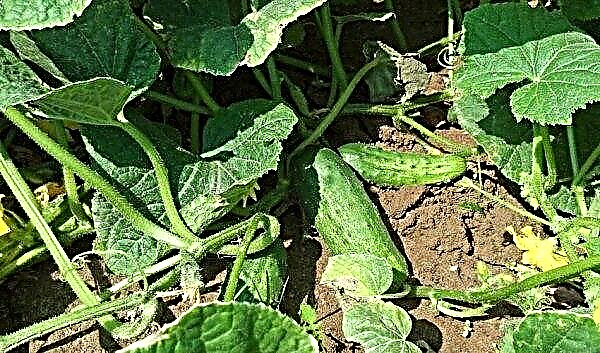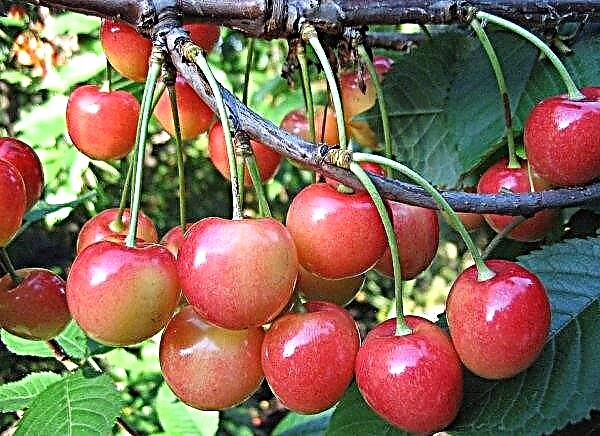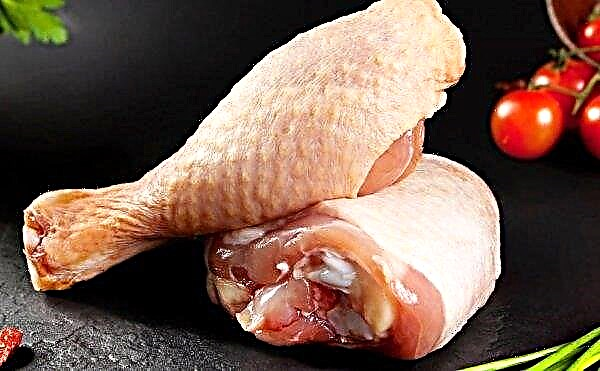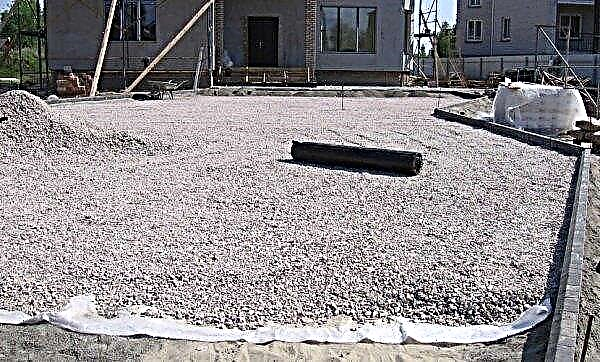Perennial primrose is a plant belonging to the family Primrose, which is the first to transform the garden plot. If you plant several varieties of this culture at the same time, you can create a real bright rainbow in the flowerbed. This article will cover the basic steps of caring for primrose.
Description of Primrose Perennial
Description of primrose bushes:
- plant height - 30 cm;
- leaves are oval, oblong, lanceolate;
- the bulb is large, up to 5 cm long and 2 cm wide;
- the surface of the sheet plate is glossy, with a wax coating.
A leaf rosette appears above the surface of the earth. It contains petiole leaves. They are characterized by an oblong or ovoid shape. A flower stalk up to 5 cm long grows from the central part of the outlet. A small umbrella forms at the top. Some varieties may look like single flowers, whose legs are no more than 7 cm.
Corollas look beautiful and consist of five oval petals. The edges can be pointed or rounded. The base is represented by a narrow long tube, and at the edges they are slightly bent. The color of primrose is different (colorful or monophonic). The shades of the inflorescences are different, depending on the variety. They are white, purple, purple or pink.Did you know? In the Scandinavian countries they believe that primrose flowers are the keys of the goddess Freya, who opens the spring with them.
In the Leningrad region, varieties that have an umbrella structure of inflorescences are most often grown. This is due to the fact that they are more hardy to frost.
Video: Perennial primrose
What is the name of the primrose inflorescence?
The name of the primrose comes from the Latin word primus. It translates as "first." This can be explained by the fact that most varieties of primrose bloom early, before the onset of snow. If you plant a spring plant on a rocky hill, the composition will be called rock garden. This will be appropriate because the culture comes from European mountains.
Did you know? In Germany, primrose is considered a symbol of marriage. The first girl to find a flower for the Easter holidays will get married this year.
When primrose blooms
Blooming primrose depends on many factors. The most basic is air temperature from + 2 ° С. The first flowers will appear in early March. Primrose blooms early because it is highly resistant to frost. Plants withstand cooling to -38 ° C.

What soil does primrose love
The culture loves to grow on loose and light soils that quickly absorb moisture. Also, if necessary, it is necessary to introduce drainage, which is used as broken brick, expanded clay or crushed stone.
It is best to plant in loamy earth or chernozem. You can also plant flowers in clay lands. If they are too heavy, then you can correct the situation by introducing one bucket of manure, sand or sphagnum. Add the entire volume to 1 m².Important! Moisture cannot be held in the ground for a long time, otherwise the plant will wither.

Care in the garden from the moment of planting in the open ground
Primrose belongs to unpretentious cultures. In the process of growing with bushes of this crop there are no problems. However, remember that care for primrose should be of high quality and timely. Water the bushes regularly, feed them and remove weeds.
Watering and feeding
Water primrose need 1 time per week. After 2-3 days, the topsoil should be loosened so as not to provoke rotting of the root system. If arid weather prevails in your area, then watering is carried out 2 times a week. For each 1 m², 5 liters of water are poured.
Fertilizers are applied every week. The first time they feed the primrose, when the first leaves appear. The last time - at the end of flowering. It is recommended to use mineral components. Try to keep track of how many nitrogen components get into the ground.
If their number is exceeded, then by the next year the primrose will not bloom, but it will be covered with a dense leaf cover. Add potassium nitrate (40 g per 5 l of water) and superphosphate (50 g per 6 l of water) in order to avoid such an unpleasant situation.
Pruning
Perennial primrose does not need forming pruning. It is only necessary to remove the flower stalks after the flowers have wilted. After flowering, greens do not need to be cut. They will protect plants from winter frosts. If they are removed, the bushes will weaken.
How to prepare a plant for winter
Due to the strong frost resistance, the primrose does not need shelter for the winter. It is enough to loosen the topsoil after flowering. If you live in the northern regions of the country, where in winter the air temperature can reach -50 ° C, then the root part is better to cover with fallen leaves. In the spring, with the onset of heat, they need to be removed.
Breeding
There are several ways to propagate perennial primrose. Each of the methods has its own advantages and disadvantages. You have the right to choose the breeding option that you think is the best. Inexperienced gardeners are better off propagating the culture by cuttings or dividing the bush.
Growing seedlings from seeds
Planting seeds for seedlings is carried out in spring, summer and late autumn. This method is suitable for annual varieties.
Important! Primrose seeds quickly lose their germination. If planting is incorrect, then by the spring there will be no more than 40% of viable seed.
The essence of the method is as follows:
- In spring, the seeds are planted in open ground immediately after the snow melts. They need to be deepened by 7–10 cm at a distance of 20 cm from each other. Water the plants every week using 1 liter of water.
- In summer, seeds are also planted in open ground according to the same principle. The first 2 months after planting, you need to water the bushes 2 times a week, using 1.5 liters of water.
- In the autumn, seeds are sown to a depth of 8 cm, at a distance of 10 cm from each other. Thanks to this planting scheme, plants will rise with the onset of spring.
 Sow seeds in the fall in containers that are dug into the ground. Regularly they need to be watered with 1 liter of water, and also loosen the soil.
Sow seeds in the fall in containers that are dug into the ground. Regularly they need to be watered with 1 liter of water, and also loosen the soil.Cuttings
The cuttings method is ideal for breeding young plants. The procedure is as follows:
- Choose a quality and healthy leaf.
- Cut it off with the kidney.
- Place in a container to a depth of 5 cm. Pre-fill the container with a mixture of garden soil and sand in equal proportions.
- Cut the sheet plate 1/3.
- Place the container in a bright, cool room, the temperature of which is + 17 ° C.
- Keep the soil moist, watering as needed.
- After 3-4 months, an escape will develop from the kidney, which must be transplanted to a permanent place.

Dividing the bush
The technology of reproduction by dividing the bush is as follows:
- Dig the root, rinse it and divide into several parts. Each of them should have kidneys.
- Sprinkle slices with wood ash and plant in open ground.
- Sprouts sprout 1 time in 2 weeks.
- Before cooling, cover the bushes with fallen leaves or spruce branches.

Disease and Pest Prevention
On perennial primrose bushes, signs of diseases such as jaundice, rust, bacterial spotting, powdery mildew, and anthracnose may occur. Treatment should be carried out immediately, as soon as you notice a change in the appearance of the bush. To combat the symptoms of diseases, fungicidal preparations are sprayed every 2 weeks.
Important! Prevention of diseases and pests is that you need to adhere to all the rules for caring for the crop. Also in early spring, the bushes are sprayed with a solution of copper chloroxide (20 g per 10 l of water).
The choice of substances and their dosage are as follows:
- against jaundice (yellowing and falling of leaves) use "Fundazole" (30 g per 5 l of water);
- Bordeaux liquid (10 g per 10 l of water) is considered to be an effective tool in the fight against rust (the appearance of brown or red-black spots on foliage);
- in the fight against bacterial spotting (olive spots on leaves and stems) use "Nitrafen" (10 g per 10 l of water);
- against powdery mildew (the symptoms are the appearance of a white coating on the surface of the leaves), copper sulfate is used (15 g per 10 liters of water);
- in the fight against anthracnosis (the signs include round or elongated spots of yellow or brown hue, which are localized on the stems and inflorescences) use Topsin (20 g per 8 liters of water).

Primrose bushes can be affected by some pests that cause irreparable harm to the flowers. Against ticks use "Actellik" (50 g per 10 liters of water). To cope with the nematode, apply "Ragor" (30 g per 8 liters of water).
So, now you know how to properly care for many years of primrose, which is gaining popularity every year. This plant can be found in most garden plots, as it is unpretentious in care, but gives the flower beds aesthetics and brightness.











